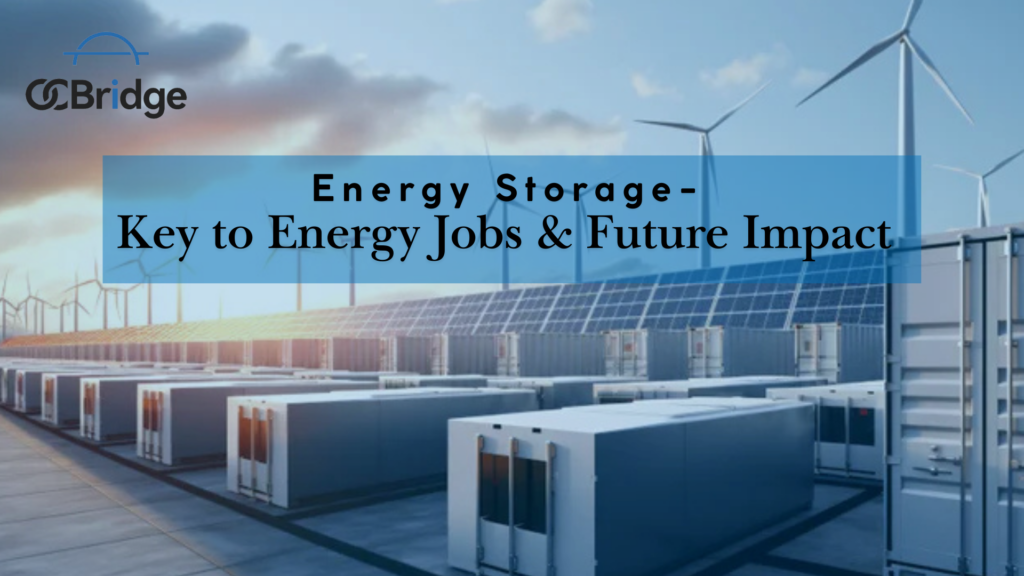Energy Storage: Key to Clean Energy Jobs and Trump's Impact on the Future
The clean energy revolution is accelerating, with renewable energy jobs growing at twice the rate of the overall economy. By 2024, over half a million people in the U.S. will be employed in wind, solar, and energy storage—sectors driving the nation’s transition to cleaner energy. As states like California and Texas lead in renewable energy jobs, energy storage is emerging as a key solution to stabilizing grids and storing renewable energy when the sun isn’t shining or the wind isn’t blowing
However, the future of energy storage—and the clean energy job market—could be influenced by Donald Trump’s policies. With his 2024 victory, federal energy policy may shift, presenting both challenges and opportunities for the sector
The Growing Need for Energy Storage
Energy storage is essential for a successful renewable energy transition. Unlike traditional power plants, solar and wind energy are intermittent, so storage technologies like lithium-ion batteries and pumped hydro are critical to ensuring energy is available when demand peaks. Energy storage stabilizes the grid and allows for a more resilient energy system, creating jobs in manufacturing, installation, and R&D.
Top 3 States Leading in Energy Storage Jobs
Despite potential federal setbacks, three states are leading energy storage job opportunities:
-
California remains at the forefront, with aggressive clean energy mandates and substantial investments in energy storage infrastructure. The state is expanding its solar capacity while enhancing grid reliability through large-scale energy storage systems, creating thousands of new jobs in the process. In 2023, California ranked 1st in the U.S. for clean electricity jobs, with 19,011 storage jobs.
-
Texas, known for its wind and solar potential, is embracing a diversified energy portfolio, including rapidly expanding energy storage capacity. Texas, already a leader in wind energy, is using storage to stabilize its massive grid and integrate renewable energy. It ranks 2nd in the U.S. for clean electricity jobs and 3rd for storage jobs, with 8,966 in the sector.
-
Nevada is another standout, with high solar capacity and a growing energy storage sector. Nevada is tapping into its abundant renewable resources while building out storage capacity, making it a leader in both generation and grid optimization. Nevada ranks 7th in the U.S. for clean electricity jobs, with 9,663 storage jobs, placing it 2nd for storage jobs.
Trump’s Energy Policies and Their Impact on Storage
Trump’s energy policies could slow the pace of clean energy adoption. His administration has historically favored fossil fuels, which may lead to:
-
Reduction in Clean Energy Tax Credits: Key incentives for solar, wind, and storage projects may be targeted, making it harder for energy storage technologies to compete.
-
Promotion of Fossil Fuels: Trump’s support for expanding oil and gas production could undermine renewable energy growth and reduce funding for green technologies.
-
Cuts to Federal Green Tech Programs: Funding for energy storage and other renewable energy initiatives could be reduced, hindering innovation in the sector.
While these policies may pose challenges, state-level actions and private sector investments will continue to drive energy storage growth. Many states are committed to ambitious renewable energy goals, and businesses are increasingly investing in storage technologies to support their clean energy transitions.
The Ripple Effect of Energy Storage Jobs
Energy storage is creating opportunities across multiple sectors:
-
Manufacturing: As demand for batteries and storage systems rises, more jobs are being created in battery production and assembly.
-
Engineering and R&D: Advancements in battery efficiency and new storage technologies are driving innovation and job growth.
-
Installation and Operations: As more renewable energy systems integrate storage, the demand for skilled technicians is growing.
-
Policy and Planning: With the growth of energy storage, experts are needed to develop policies and regulations that will accelerate adoption.
Trump’s Impact on Clean Energy Jobs
Although Trump’s policies may limit federal support for energy storage, private companies and state governments are likely to continue pushing forward. Technological advancements and private investments will help ensure continued growth in the sector, despite federal challenges.
Looking Ahead: Energy Storage Jobs of the Future
The future of energy storage remains promising. As battery technology improves and costs decrease, energy storage will become even more integral to grid optimization, energy independence, and decarbonization efforts. Regardless of federal policy, market forces and technological advancements will continue to drive growth in the sector.
Conclusion
Energy storage is crucial to the renewable energy transition. It stabilizes grids, reduces reliance on fossil fuels, and cuts emissions—while driving job creation. Although Trump’s policies may slow some progress, state-level initiatives and technological innovation will continue to fuel growth in this critical sector. Energy storage is not just a key to a clean energy future—it’s also one of the fastest-growing job sectors in the U.S., creating opportunities across manufacturing, engineering, operations, and policy.



